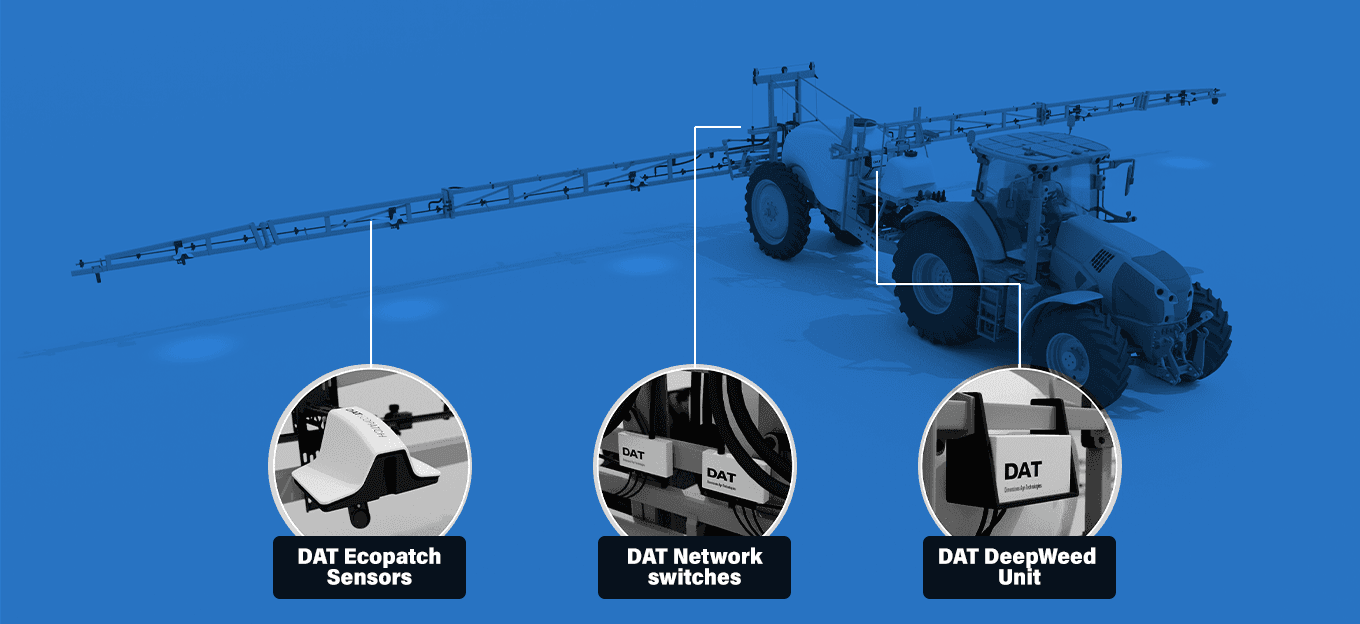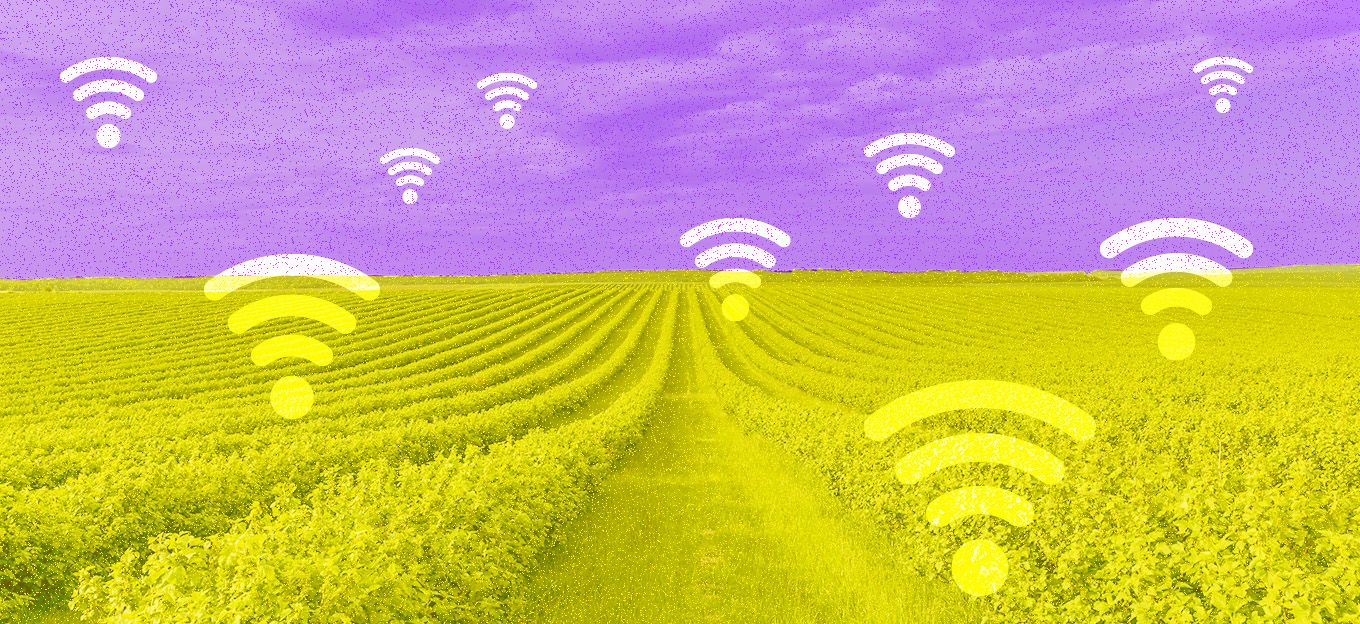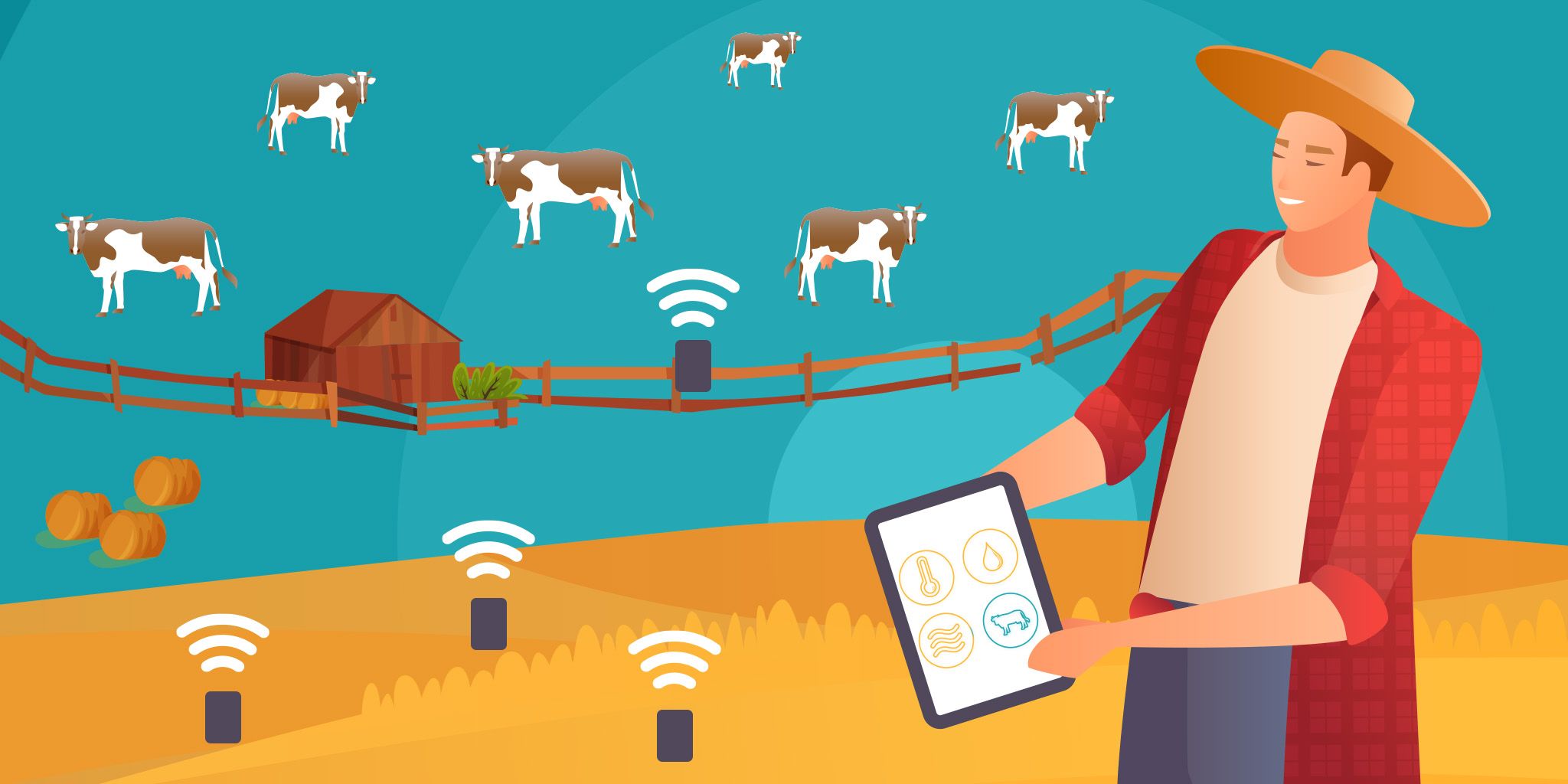5 Ways Connected Tech is Transforming Precision Agriculture & Sustainability
5 Ways Connected Tech is Transforming Precision Agriculture & Sustainability
- Last Updated: July 28, 2025
Kajeet
- Last Updated: July 28, 2025



Agriculture has always relied on observation and timing, but today, it’s also heavily powered by data. Farmers are turning to “smart farming” to work smarter (literally), not harder, as global demand for food continues to rise. According to Allied Market Research, the global IoT in agriculture market was valued at $27 billion in 2021 and is estimated to reach nearly $85 billion by 2031.
Precision agriculture, or smart farming, refers to the use of connected technologies to optimize agricultural practices. Internet of Things (IoT) connects devices like sensors, GPS systems, and drones, so farmers can receive, detect, and collect real-time data. With this data, farmers can make faster, more informed decisions for their livestock, crops, and farming equipment. This shift in smart farming isn’t just about efficiency – it’s about sustainability. With IoT, farmers can focus on reducing waste, conserving water, and increasing crop health.
Here are five powerful use cases where IoT is making a difference in the fields (pun intended):
Water & Irrigation Management
One of the most impactful applications of IoT in agriculture is precision irrigation. By deploying soil moisture sensors across the fields and integrating them with irrigation systems, farmers can water crops only when necessary. Real-time data allows these systems to detect exactly how much moisture is present, creating targeted water management that minimizes waste. Smart irrigation systems can even automate watering schedules and alert farmers if they are over or underwatering their crops.
Livestock Monitoring
We are all familiar with medical-grade wearables for humans – devices that help us track and monitor our vitals and health patterns. But now, IoT wearables are transforming livestock management by giving farmers unprecedented insight into animal health, behavior, and location. Devices like ear tags and collars monitor animals’ vital signs and activity levels. These reports help farmers detect if an animal shows early signs of illness, allowing for faster intervention. In vaster farms, GPS-enabled trackers help prevent loss and make it easier to locate individual animals. Livestock IoT monitoring gives famers peace of mind and healthier herds. Check out how IoT is transforming livestock monitoring and for healthier herds.
Predictive Crop Monitoring
Similar to water management, IoT devices and technologies help farmers stay ahead of crop threats through predictive monitoring. Field sensors and drones collect detailed data on plant health and soil conditions. Algorithms then analyze this data to detect early signs of nutrient deficiencies, pest infestations, or fungal diseases. With this real-time data, farmers can be proactive and take action to keep the quality of their crops healthy. This not only improves crop quality, but quantity too – since it reduces chemical usage and crop waste. Explore how companies are serving farmers with their IoT soil solutions and agricultural monitoring.
Climate Control
Greenhouses have become significantly more efficient thanks to smart integration. Connected devices monitor internal climate variables such as temperature and humidity. These systems automatically adjust heating, cooling, ventilation, lighting, and irrigation based on real-time conditions. As a result, crops receive prime care with minimal manual labor. IoT enables greenhouses to reduce energy and water consumption, an important factor for farmers when considering their sustainability efforts. Farmers rely on precision and adaptability for their greenhouses – see how smart greenhouse monitoring systems are delivering this mission!
Farm Equipment
Modern farms heavily rely on machinery, and connected devices help keep those operations running smoothly. Tractors, plows, harrows, and harvesters can be equipped with telematics sensors to monitor real-time data on their usage patterns, fuel levels, and engine health. This allows farmers to monitor performance remotely and use predictive maintenance proactively. Especially for large-scale farms, this kind of visibility is significant for enhancing operational efficiency and reducing logistical costs. Learn how ELA Innovation supports machine management for farmers and their fleets.
How LTE & 5G Are Powering Smart AgTech
Whether you are monitoring soil moisture levels, relying on telematics for your farm equipment, or regulating temperature in a green house, reliable connectivity is crucial. LTE/5G connectivity ensures that farmers are getting the most out of your AgTech solution. A great example of an AgTech company leveraging SIM technology to enhance their offering is Agralarm poultry house alarms.
Agralarm was founded to meet the need for advanced technology and monitoring for poultry farmers. Much of rural America is still supported by old telephone service lines and connectivity to farms is often unreliable. Along with the decline of the landline and consumer shift to wireless technology, fast repairs became difficult and untimely. To support customers in remote locations, Agralarm needed premium wireless coverage and backend tools for managing data usage, customer accounts, and notifications.
Agralarm partnered up with Kajeet to embed multi-carrier LTE into their solution. They also leverage a cloud-based platform to manage their devices and data usage.
“The real success of the solution is demonstrated in the fact that its benefit is invisible to farmers 99.9% of the time. Growers are able to focus on their daily work without concern about a system outage.”
Steve Flaherty, Founder and President of Agralarm.
Read more about Agralarm’s Smart AgTech success story here.
The Most Comprehensive IoT Newsletter for Enterprises
Showcasing the highest-quality content, resources, news, and insights from the world of the Internet of Things. Subscribe to remain informed and up-to-date.
New Podcast Episode

What is Hybrid Connectivity for IoT?
Related Articles




